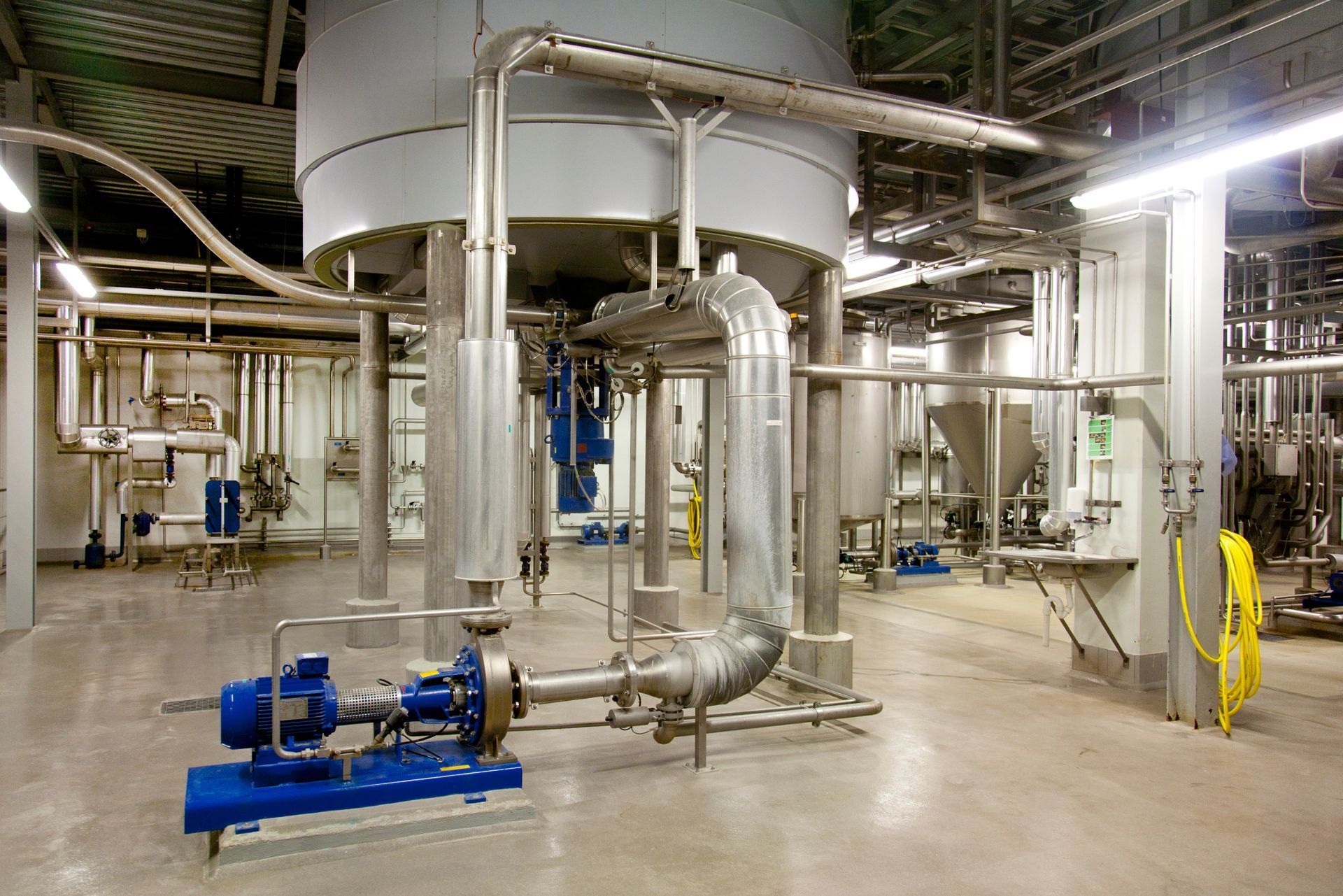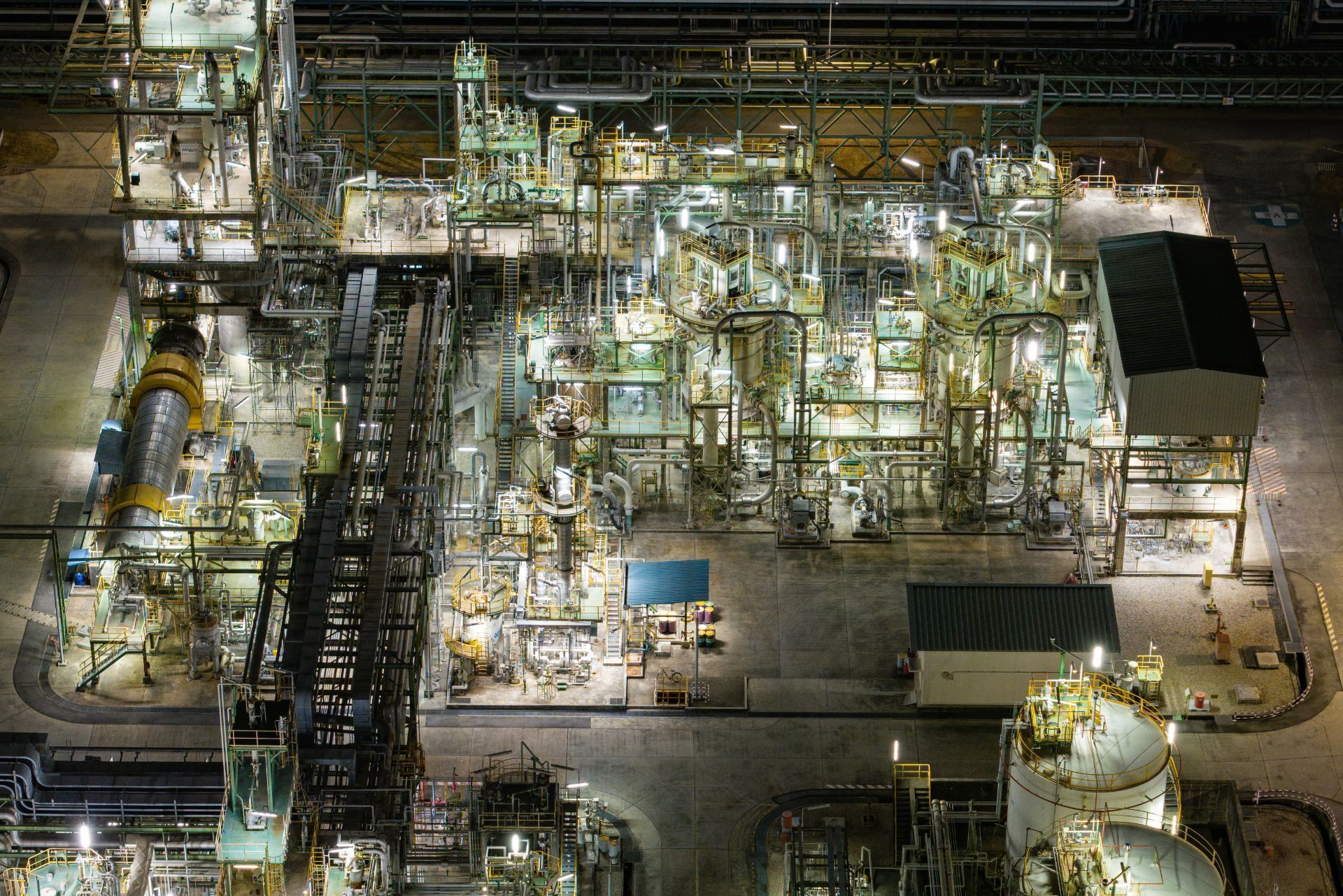Top 3 Recommended Policies

The specialty chemicals industry is a dynamic and rapidly growing segment of the global chemical market, valued at approximately $640.8 billion in 2023. With projections estimating growth to $1.7 trillion by 2029, this sector plays a crucial role in numerous industries, from pharmaceuticals to electronics and agriculture. However, operating a specialty chemical manufacturing plant involves complex risks that require tailored insurance solutions to safeguard assets, employees, and environmental compliance.
Understanding the nuances of specialty chemical manufacturing plant insurance is essential for plant owners, managers, and stakeholders to mitigate financial exposure and ensure regulatory compliance. This article explores the key aspects of insurance in this sector, including risk factors, coverage options, regulatory challenges, and emerging trends in sustainability and environmental protection.
For a detailed overview of the specialty chemicals market and its growth trajectory, visit Statista’s specialty chemicals industry page.
Understanding Risks in Specialty Chemical Manufacturing
Specialty chemical plants face unique operational risks due to the nature of their products and processes. These risks include chemical spills, fires, explosions, equipment breakdowns, and environmental contamination. The handling and storage of hazardous materials demand stringent safety protocols and robust risk management strategies. In addition, the complexity of chemical formulations often requires specialized knowledge and training, making it crucial for companies to invest in ongoing education for their workforce to mitigate risks effectively.
Moreover, the chemical industry employs over 1.9 million people directly in the United States alone, underscoring the importance of workplace safety and liability coverage. Insurance policies must address potential employee injuries, third-party claims, and property damage to ensure comprehensive protection. This is particularly vital in a sector where the consequences of accidents can be catastrophic, not only affecting the immediate vicinity but also having far-reaching impacts on local communities and ecosystems. As a result, companies are increasingly adopting a proactive approach to safety, implementing advanced monitoring systems and emergency response plans to safeguard both their employees and the surrounding environment.
Environmental liability is a particularly critical concern. A recent study highlights that the development of environmental liability insurance has a tangible impact on reducing industrial carbon emissions, especially in industrially developed regions. This reflects the growing emphasis on sustainability and responsible manufacturing practices within the specialty chemicals sector. Furthermore, as consumers and regulatory bodies alike demand more transparency and accountability, companies are compelled to adopt greener technologies and processes, which can also serve as a competitive advantage in the marketplace.
Plant operators should also consider the implications of regulatory compliance, as failure to meet environmental and safety standards can lead to costly fines and operational disruptions. The regulatory landscape is continually evolving, with new legislation aimed at enhancing safety and environmental protection. Companies must stay informed about these changes and adapt their practices accordingly, which often involves investing in new technologies and processes that not only comply with regulations but also promote sustainability. Additionally, fostering a culture of safety within the organization can lead to improved employee morale and retention, further contributing to the overall success of the business.

Key Insurance Coverage Types for Specialty Chemical Plants
Insurance for specialty chemical manufacturing plants typically encompasses several coverage types tailored to the industry’s specific risks:
- Property Insurance: Covers damage to plant buildings, machinery, and inventory caused by fire, explosion, natural disasters, or accidental incidents.
- Liability Insurance: Protects against third-party claims for bodily injury, property damage, or environmental harm resulting from plant operations.
- Environmental Liability Insurance: Addresses pollution-related risks, including cleanup costs and legal liabilities arising from accidental releases or long-term contamination.
- Workers’ Compensation: Provides benefits to employees injured on the job, which is vital given the hazardous nature of chemical manufacturing work.
- Business Interruption Insurance: Covers lost income and ongoing expenses if the plant must halt operations due to an insured event.
Given the complexity of specialty chemical manufacturing, many companies opt for customized insurance packages that combine these coverages to address their unique risk profiles. This custom approach allows businesses to ensure that they are not only compliant with regulatory requirements but also adequately protected against the specific threats they face, such as supply chain disruptions or technological failures.
As the Asia Pacific region emerges as the fastest-growing market for chemical industry insurance, with a projected CAGR of 8.1% from 2025 to 2033, insurers are increasingly tailoring products to meet the evolving needs of specialty chemical manufacturers worldwide. This trend is driven by the rapid expansion of the chemical sector in countries like China and India, where regulatory frameworks are becoming more stringent, and environmental concerns are gaining prominence. More details on this trend can be found at
Growth Market Reports. Furthermore, as technology advances, insurers are also leveraging data analytics and risk assessment tools to better understand and mitigate the risks associated with chemical production, ultimately leading to more precise underwriting and pricing strategies that reflect the true risk exposure of each facility.
Regulatory Compliance and Its Impact on Insurance
Compliance with stringent regulations such as the European Union’s REACH (Registration, Evaluation, Authorisation and Restriction of Chemicals) and the United States’ Toxic Substances Control Act (TSCA) is a major challenge for specialty chemical manufacturers. These regulations require extensive testing, documentation, and reporting to ensure chemical safety and environmental protection. The complexity of these regulations often necessitates a dedicated compliance team within organizations, which can lead to increased operational costs and resource allocation. Furthermore, the evolving nature of these regulations means that companies must remain vigilant and adaptive, continuously updating their practices to meet new requirements as they arise.
Non-compliance can result in significant financial penalties, legal action, and reputational damage. Consequently, insurance policies often incorporate clauses related to regulatory compliance, and insurers may require proof of adherence to these standards as a condition of coverage. This requirement not only underscores the importance of compliance but also places additional pressure on manufacturers to maintain thorough records and documentation. Insurers may also conduct audits or assessments to evaluate a company's compliance status, further complicating the relationship between regulatory adherence and insurance procurement.
New entrants to the specialty chemicals market face particularly high barriers due to these regulatory demands, which can also influence insurance underwriting decisions and premium rates. Startups may struggle to secure favorable insurance terms without a proven track record of compliance, making it essential for them to invest in compliance training and infrastructure from the outset. Additionally, as the market becomes more competitive, established companies may leverage their compliance history to negotiate better insurance rates, further entrenching their position in the industry.
For a comprehensive analysis of the regulatory landscape affecting specialty chemicals, visit Consainsights’ specialty chemicals market report. Understanding these dynamics is crucial for stakeholders aiming to navigate the complexities of the specialty chemicals sector effectively and to mitigate risks associated with regulatory compliance.
Environmental Sustainability and Insurance Trends
The chemical industry has made significant strides in improving its environmental footprint. Between 2018 and 2022, the sector’s greenhouse gas intensity dropped by 7.4%, while energy efficiency improved by 6.9%. These advancements reflect a broader industry commitment to sustainability and responsible resource management. Companies are increasingly investing in innovative technologies, such as carbon capture and storage, which not only help in reducing emissions but also pave the way for a circular economy where waste is minimized, and resources are reused. This proactive approach is not just about compliance; it is about redefining business models to align with global sustainability goals.
Insurance providers are increasingly factoring sustainability into their risk assessments and policy offerings. Environmental liability insurance, in particular, incentivizes companies to adopt greener practices by linking coverage terms to environmental performance. This shift is prompting businesses to evaluate their operations through a sustainability lens, encouraging them to implement risk mitigation strategies that prioritize environmental stewardship. Insurers are also developing new products that reward companies for achieving sustainability milestones, thus creating a financial ecosystem that promotes eco-friendly practices.
Additionally, green supply chain management is gaining traction in specialty chemical enterprises. Regulatory compliance, green procurement, and internal environmental protection measures contribute not only to ecological benefits but also to economic advantages by reducing waste and improving operational efficiency. By collaborating with suppliers who prioritize sustainability, companies can enhance their overall supply chain resilience, ensuring that they are not only compliant with current regulations but also prepared for future changes in environmental legislation. This strategic alignment can lead to stronger brand loyalty among consumers who increasingly favor environmentally responsible products.
Insights into how green supply chain management enhances economic and environmental outcomes can be explored further at
this study on green supply chain management. Moreover, the integration of digital technologies, such as blockchain and IoT, is revolutionizing supply chain transparency and efficiency, allowing companies to track their environmental impact in real-time. This level of visibility not only aids in compliance but also fosters trust among stakeholders, as consumers and investors alike demand greater accountability in corporate sustainability efforts.

Choosing the Right Insurance Partner
Selecting an insurance provider with expertise in specialty chemical manufacturing is crucial. The ideal partner will understand the industry’s unique risks, regulatory environment, and sustainability goals, offering tailored solutions that evolve alongside the business. A strong insurance partner not only provides coverage but also acts as a strategic ally, helping businesses navigate the complexities of compliance and risk mitigation in an ever-changing landscape.
Factors to consider when choosing an insurer include:
- Experience with chemical industry clients and knowledge of relevant regulations.
- Comprehensive coverage options that address both traditional and emerging risks.
- Support for environmental liability and sustainability initiatives.
- Responsive claims handling and risk management services.
Engaging with an insurer who actively supports environmental liability insurance can also help reduce industrial carbon emissions, as demonstrated in recent research, thereby aligning risk management with broader corporate responsibility objectives. Additionally, an insurer that prioritizes sustainability can provide insights into best practices for reducing environmental impact, which can be invaluable for companies looking to enhance their eco-friendly initiatives. This collaboration can lead to innovative risk management strategies that not only protect the business but also contribute positively to the community and the environment.
Furthermore, it is essential to evaluate the insurer's financial stability and reputation in the market. A well-established provider with a solid track record can offer peace of mind, knowing that they will be able to meet their obligations in the event of a claim. Engaging in discussions with current clients of the insurer can provide valuable insights into their service quality and responsiveness. This due diligence ensures that the chosen insurance partner not only meets regulatory requirements but also aligns with the company's long-term vision and values, fostering a relationship built on trust and mutual growth.
Conclusion
Insurance for specialty chemical manufacturing plants is a critical component of risk management in a complex and rapidly evolving industry. With the global specialty chemicals market projected to grow significantly in the coming years, understanding and addressing the unique risks associated with chemical production is more important than ever.
From property and liability coverage to environmental liability and business interruption insurance, comprehensive protection safeguards plants against financial loss and regulatory penalties. Embracing sustainability and partnering with knowledgeable insurers further enhances resilience and supports long-term success.
For more insights into the chemical industry’s outlook and sustainability efforts, Deloitte provides an in-depth analysis at
Deloitte’s chemical industry outlook.
Contact Us
Phone
Location
9595 Six Pines Dr, Suite 8210, The Woodlands, TX 77380

